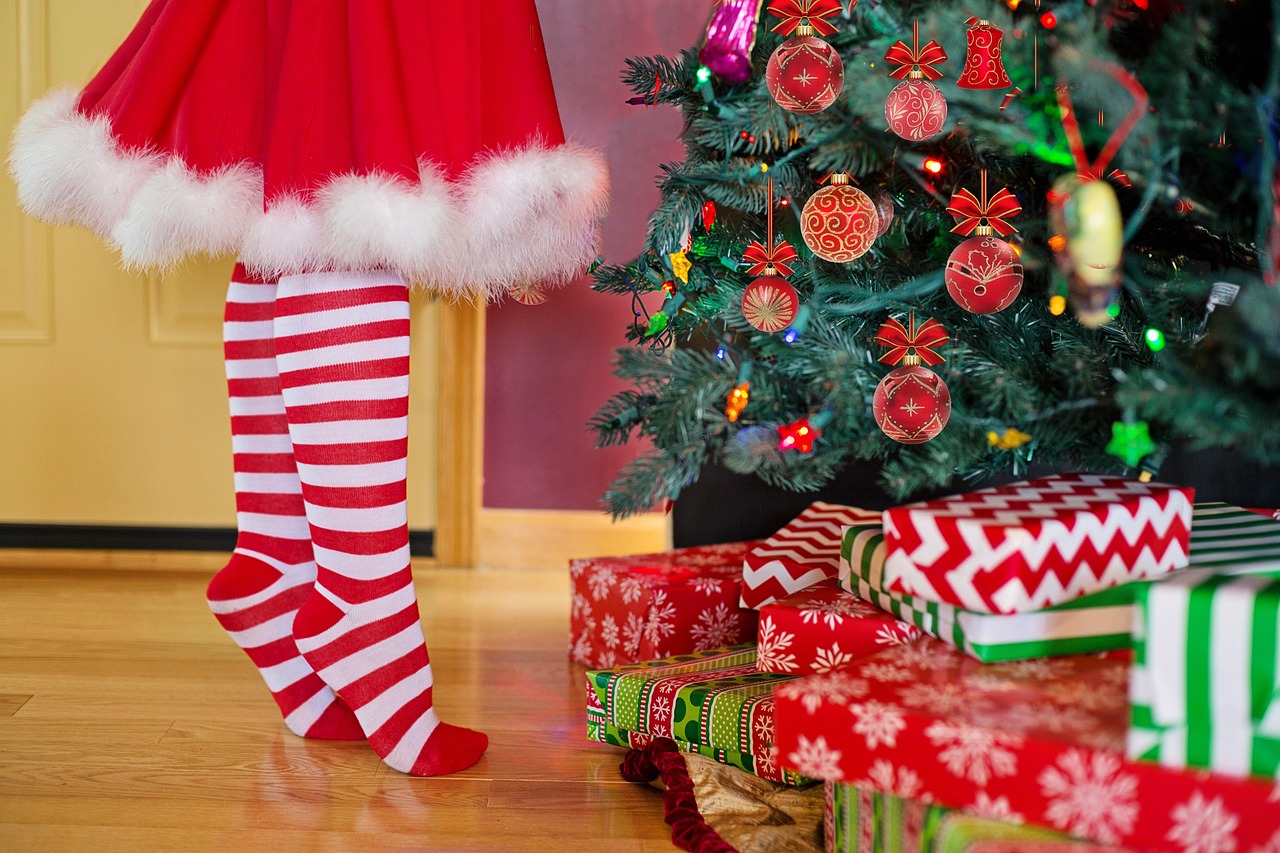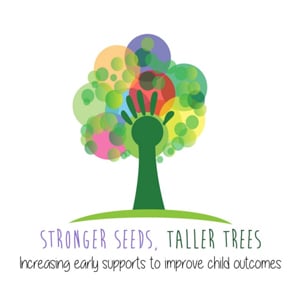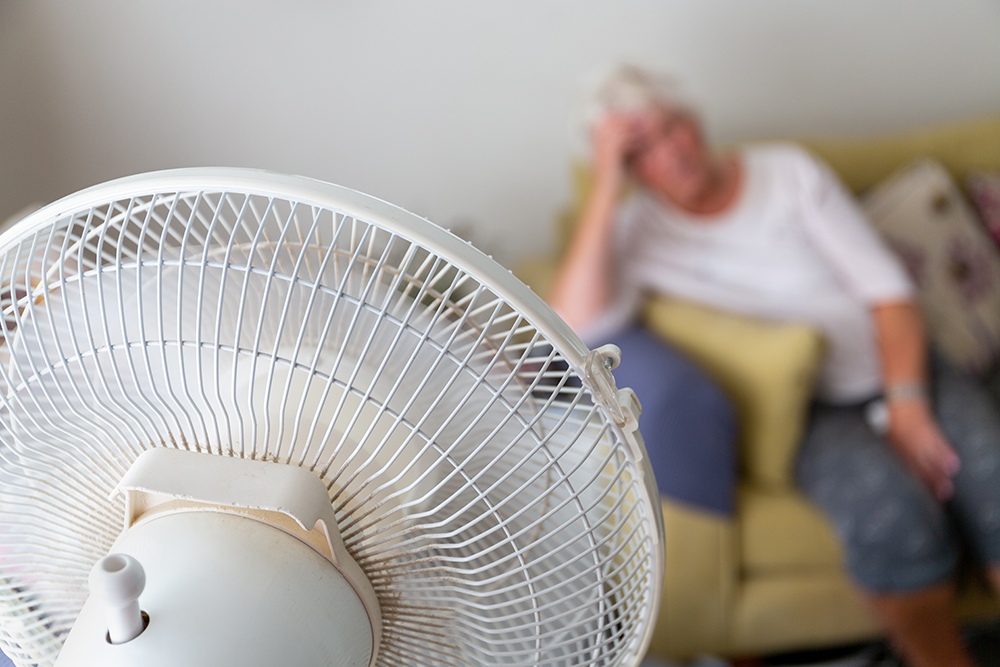08 December 2023

Ho ho ho.
December has darted by and you’re already staring down the Christmas Day barrel. Time to get out the checklist and make sure you’ve got all bases covered.
- Tree and decorations up✅ and up to scratch ✅
- Gifts for everyone ✅ Wrapped✅ Labelled✅ Under the tree✅
- Fridge stocked ✅ Alcohol✅
- Ready for the big day ✅
But slow down.
While preparations for Christmas Day are in hand, there’s a lot of other considerations – focusing on safety and wellbeing – which need some thought and planning as well.
The festive and holiday season are about winding down, celebrations, get-togethers and parties, family and friends, getting away, day trips … and generally eating and drinking too much.
Some of those activities, done on the spur and in the spirit of the moment or without thinking or planning, can present unnecessary risks.
There’s also the natural elements to take into consideration – sun, heat and dry storms can combine lethally to produce bushfires.
At the same time, businesses take the opportunity for a breather – so availability and access to goods and services are limited.
Here’s some examples of the festive season gone wrong!
- Celebrating outdoors in the heat of the day. Sun and alcohol don’t mix. Think heatstroke or sunburn. And the chemist or your GP are closed.
- Heading away for a few days, and you’ve posted your excitement on social media. You’ve also forgotten to get your mail held at the post office. Your friends are happy for you – and so are potential thieves.
- You’ve gone hard on your Christmas lights display this year. But you’ve used double adaptors and plugged too many lights into one power socket. There’s a meltdown. And a fire.
- The weather is enticing, and you’ve launched the boat for a few hours in the bay. Alcohol and jovial spirits are a recipe for disaster.
Beyond the Christmas tree and tinsel, some risk assessment and planning should be part of your overall festive preparations.
These will guarantee a safer and happier holiday season all round.
Medication mastermind
According to Healthdirect Australia, more than one in five Australians forget to pack their medication when going on holiday.
Do you have enough prescriptions and medications to get you through the public holidays? If you’re going away, do you have an up-to-date list of your medications?
Visit your GP and pharmacy before the Christmas shutdown and plan ahead.
Theft and security suggestions
Annual crime statistics show an increase in burglaries in the lead-up to Christmas, with a spike in January.
Insurance claims for household theft also skyrocket during the same period.
Common claims over the festive season include jewellery, electrical equipment, computers and accessories, bikes, and tools.
There’s a few simple and commonsense safeguards you can take to protect your home and property.
If you’re home over Christmas:
- Don’t put Christmas trees and presents near windows with a street view as this can encourage opportunistic thieves.
- If you are expecting parcel deliveries and no one is home, redirect the parcel to the PO or get a PO locker.
- Lock toys and tools away each night.
- Front and back doors are the first line of defence against potential thieves. Invest in the best quality door locks, screens and maybe even a security system.
If you’re going away:
- Don’t post your holiday plans on social media.
- Ensure the house is securely locked, including windows usually left open.
- Smart plugs can be set on timers or controlled automatically, and some systems even have a built-in mode which will randomly turn lights or a radio/television on or off during evening or morning hours.
- Redirect your mail or have it collected by a friend. Ask the friend to regularly clear brochures and advertising material from the letterbox.
- Tell neighbours or friends, who can check on the house, you are away and who will be at the house legitimately, such as pet minders, family or the mowing man.
- Secure your garage or, if unable, move items such as bikes inside the house.
- Do not leave cash in the house and make sure jewellery is locked away in a safe place.
- Mow the lawn, tidy the yard and stop all deliveries.
- If you have a landline, turn off the answering machine and turn the phone volume down.
NSW Police recommend some simple ongoing measures to protect your property and give you peace of mind all year through.
Christmas commonsense
Everyone wants their Christmas decorations to look the best and reflect the festive mood.
There’s the twinkling lights display outside, more lights on the tree and perhaps some animated electric displays indoors.
You also might have some Christmas candles to set the atmosphere.
Remember, there are some important do’s and don’ts:
- Check all smoke detectors in your house in the lead-up to Christmas.
- Safely maintain your indoor and outdoor electrical decorations. Check them for frayed or bent cords and blown or flickering globes. Keep a record of when you bought the items and replace them as they age.
- Don’t overload circuits, extension cords, or electrical sockets. Spread decorations across multiple circuits to prevent a meltdown.
- Consider where to place your Christmas tree. If it’s a real tree, it will dry out and could become a fire hazard.
- Never leave candles unattended or near flammable objects such as curtains.
- Turn off lights and other electronics before going to bed.
Kitchen craziness
Festive and holiday season celebrations often start in the kitchen and adjourn to the dining room table. Family and friendship bonds are cemented by good food and accompanied by a glass of wine or beer.
But the fun and laughter can take the focus away from kitchen and cooking safety. A Christmas safety article reports on Christmas Day one in 10 people experience cooking burns and blisters with hot liquids, and one in five people tend to get serious cuts while cutting the meat and vegetables.
There are a few reminders to take the crazy out of the kitchen on Christmas Day:
- Limit the number of people in the kitchen – keep children and pets out – and especially around the hotplate, oven and food.
- Don’t wear loose clothing or sleeves that dangle while cooking.
- If you are frying, grilling or boiling food, don’t leave pans and pots unattended. If you’re simmering, baking or roasting food, check regularly.
- Use a timer to remind yourself the stove or oven is on.
- Keep flammable items, such as pot holders, oven mitts, wooden utensils, paper and plastic bags, food packaging and towels, away from your stove, oven or any other kitchen appliance that generates heat.
- Use different chopping boards for raw meat, fruit and vegetables.
There’s also some important steps to follow for food preparation and cooking, serving and storage – to ensure you and your family and friends stay safe.
- Always cook poultry, minced meat and sausages all the way through until the juices run clear and there is no pink.
- Whole pieces of red meat can be cooked to taste, and if it is properly heated and well browned on the outside to kill bacteria it can be rare inside.
- Food should not be kept at between 5°C and 60°C — the ‘temperature danger zone’ — for more than two hours. If perishable food has been in the temperature danger zone for two to four hours, you should use it immediately. If perishable food has been in the temperature danger zone for more than four hours, toss it in the bin.
- Keep food steaming hot until you serve it.
- Cool leftovers quickly. This prevents bacteria which have survived the cooking process from multiplying while your hot food cools down. The best way to do this is to cover any leftovers and put them in the fridge or freezer. Leftovers can generally be kept for two to four days in the fridge.
- If you’re sending guests home with leftovers, give them ice packs or blocks from the freezer to keep their food chilled on the way home.
- When you reheat leftover foods, make sure all parts are steaming hot, enough to kill off any bacteria. Reheat food rapidly to at least 70ºC.
Drink smart, not hard
We’ve all done it! It’s easy to get carried away with friends, parties and festivities, the moment … and the drinks just keep flowing. We can be regretful the next day, but in the meantime some damage may have been done. Relationships. Poor decisions. Accidents.
Think first, before you’re not in a position to make a good decision:
- If you’re out and about and drinking, always have a plan on how you’re getting home. Never drive. Consider public transport options.
- If you’re in a group, always look out for one another.
- Alternate alcoholic drinks with non-alcoholic beverages.
- Don’t combine alcohol with too much sun. Alcohol will dehydrate you quicker.
- If you’re had some drinks, avoid activities that put you in the driver’s seat like driving, bike riding, skating, boating or surfing.
- Step away from lively differences of opinion that may develop into arguments. Agree to disagree.
- If you do find yourself in a triggering situation, call it a night.
- If you’re the host of a get-together, ensure there’s plenty of snacks and non-alcoholic drinks. Make games and activities available that offer a break from drinking.
Sun smart
The festive season coincides with summer holidays and, of course, that’s the peak heat point of the year.
Extreme heat events in Australia claim more deaths than all other natural hazard events combined. Those at greater risk include older people, people with existing medical conditions, babies and young children, outdoor workers, socially isolated people, people who are homeless and pregnant women.
Visit NSW Health for some beat the heat advice and recommendations. Healthdirect also has some great information and suggestions to stay cool and avoid hot weather risks.
Cancer Council NSW still promotes its slip, slop and slap campaign, though in later years it has added another two pieces of sound advice: seek shade and slide on the sunglasses.
DIY dangers
Holidays are the perfect time to catch up on some DIY projects and house maintenance. Think ladders, electrical equipment or chemicals.
A few simple measures can mean the difference between getting the job done safely and a trip to emergency:
- Safety gear: Wear the right clothing for the job such as long sleeves and pants, enclosed shoes, protective glasses, earmuffs or plugs; breathing protection, gloves, disposable overalls, cut-resistant clothing and kneepads.
- Hidden dangers: Be aware of the age of your property and be on the alert for lead-based paints and asbestos-based products.
- Tools: Use the right tool for the job and make sure it’s in good working order. Always let someone know what you are doing so they can be aware of risks and hazards and find you if needed. It’s good practice to have someone working with you when using ladders, even at low heights.
- Tradesman: Don’t attempt jobs that require a licensed tradesman such as electrician or plumber. It’s illegal to do them yourself.
- Assess the job: Don’t do a DIY job beyond your capabilities and tool kit. Safety, structural integrity and longevity are paramount, especially for future homeowners.
Bushfire threat
Most of us remember the 2019-2020 Black Summer bushfires which roared into life across Australia, caused by dry conditions, a lack of soil moisture and, finally, extreme temperatures. They peaked in December 2019 and were only extinguished completely in May 2020, after ravaging 24.3 million hectares, destroying 3,000 buildings (including 2,782 homes), and claiming 34 lives.
- The NSW Government has guidelines on how to prepare a bushfire survival plan.
- The NSW RFS has an online assessment tool designed to help you make an informed decision when making your bush fire survival plan, such as whether you will leave early, or stay with your property and defend it.
- While no one wants any type of emergency over Christmas, it’s always wise to be prepared in a practical sense. An emergency preparedness kit should be stocked and stored in an accessible spot. It should include food, water, medications, phone numbers, first aid kit, torch with extra batteries, and blankets.
Take the stress out of Christmas
The Christmas and holiday season are a conundrum. On one hand, they’re about family, friends, and celebrations. That can bring lots of fun and laughter, though it can be a cause of stress in itself.
But it’s also the loneliest time of the year for some. Lifeline reports calls and texts peak up to 6 per cent above average in the days between Christmas and New Year’s Eve and on the day immediately after the New Year’s Day public holiday.
Healthdirect offers a practical eight ways to stress-proof your festive season. Healthdirect also offers 24-hour health advice on 1800 022 222.
If you need and want to talk to someone, there’s always a caring and friendly person at Lifeline 11 13 14, while the Mental Health Line can offer support on 1800 011 511.





